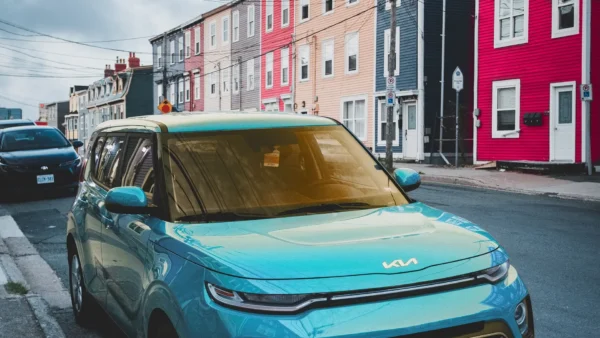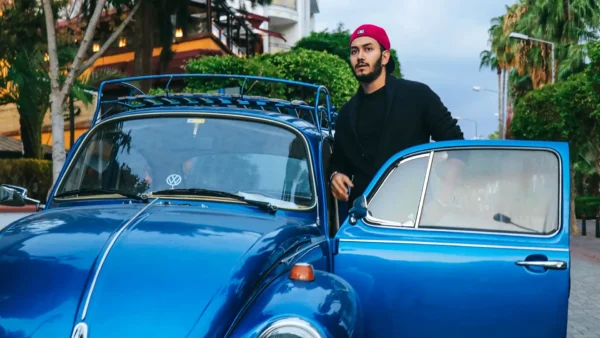For parents who have new and learning drivers in the house or maybe even getting their own car to go off to school, it’s good to know how much you can expect to pay for their auto insurance. The short answer is that for a family living in North York, it could cost you as little as $500 to add an 18-year-old child as an occasional driver to your vehicle, or as much as $3,000 or more if you get them their own used vehicle.
If you have teenage children and you’re trying to plan your finances for the next 5 or 10 years, you probably think a lot about how much you’ll have to pay if they choose to go away for school. Another cost that you should consider is what they might pay for transportation as they get their licenses and start driving. Monthly payments, gas and maintenance aside, the cost of auto insurance for a driver under 25 can sometimes be your biggest cost, and certainly worth considering. With this in mind, we’ve created a fictional family living in North York, Ontario, to help illustrate the potential costs you might expect as your kids start driving. Manny (62) and Sandra (56) both have more than 20 years of driving experience, and have no tickets or at-fault claims currently on their records. As such, they pay a combined $2,400 a year to insure a late model Ford F-150 and a slightly older Honda CRV.
And then came the kids…
Most people know that the best way for new teen drivers to gain experience without paying top dollar for insurance is to add them as occasional drivers to their parents’ policy. If Manny and Sandra had an 18-year-old girl (let’s call her Raine), who just got her full G license, took an approved driver training course and has a clean driving record so far, adding her as an occasional driver to the CRV would only add $496 a year to the cost of their policy. A few other things to consider:
- If Raine didn’t have driver training, the additional cost would be $544, so driver training in this case would only save her parents less than $50 bucks a year.
- If Raine was a boy (let’s call him Blaine) the added cost of adding him to the policy (with driver training) would be $1,035 a year.
- Even if Raine had a minor speeding ticket on her record, the total added annual cost of adding her to the policy would be $631.
- If Blaine had a speeding ticket, it would cost $1,310 a year to add him to the policy.
Though the discrepancies between male and female premiums are eye-opening, they are very well founded on real claims statistics going back for decades. The fact is that young male drivers are by far more likely to have a serious collision than their female counterparts. All that aside, the cost of adding a young driver to your policy would be seen by most as reasonable, in that the additional premium for the occasional driver is more or less equal to or less than the premiums for each primary driver.
Junior wants his/her own car
This is where auto insurance costs can really start getting out of hand, when you have a young, inexperienced driver as the primary driver on their own vehicle. And contrary to what some people think, you can’t just buy a third car and make one of the parents the primary driver of that car. So when Manny and Sandra start looking for a reliable used car for Raine, she has to be listed as the primary driver of that car. Before making a purchase, Sandra calls her broker for some quotes on auto insurance.
- As the primary driver of a 2011 Honda Civic Si 4DR, Raine (with driver training) would pay an additional $3,180 per year, on top of what Manny and Sandra pay for their existing vehicles.
- In this case, if we magically turned Raine into Blaine, it wouldn’t add that much pain. Adding an 18-year-old male driver with driver training would cost an additional $3,192, only $12 more.
- If young drivers want their own car, then tickets are a huge no-no:
- Raine’s premium for the Civic would be $6,526 a year with one minor ticket.
- Blaine’s annual premium with one minor ticket would be $6,636.
Sometimes a kid just needs their own car, say if they’re working full-time and you live in an area where public transportation is unreliable. But the moral of this story is that to keep premiums down, it’s really a good idea to keep kids under 25 as occasional drivers for as long as possible.
What if Junior wants their own insurance?
The rules that currently exist in Ontario allow young adults to stay under their parents’ policy indefinitely, as long as they continue to live in the same house. But of course at some point, kids want to stand on their own two feet. Well, here’s what would happen if Raine/Blaine wanted insurance on the same 2011 Honda Civic, but were not under their parents’ insurance policy:
- At 18 years of age, Raine would pay $5,099 a year for standalone insurance.
- Blaine, at the same age, would pay $6,576.
These premiums are based on a driver with driver training, no tickets and no accidents. We would include quotes with one or two speeding tickets, but you don’t want to know. At that point, it’s very possible that both Raine and Blaine would be riding the train.
When does it get better?
You may have heard that young drivers pay significantly more until they turn 25. It’s true, but the journey from 16 to 25 is not a straight line down. Here’s what Blaine and Raine, assuming they have driver training and keep their records clean, would pay for standalone auto insurance every year until they turn 25:
| Age | Blaine (male) | Raine (female) |
|---|---|---|
| Age 16 (G1 license) 1 | NA | NA |
| Age 17 (G2 license) 2 | $1,035 | $496 |
| Age 18 (G license – occasional) 3 | $1,136 | $496 |
| Age 18 (G license – standalone) | $6,576 | $5,099 |
| Age 19 (G) | $5,784 | $5,076 |
| Age 20 (G) | $4,644 | $4,071 |
| Age 21 (G) | $4,041 | $3,318 |
| Age 22 (G) | $3,384 | $2,929 |
| Age 23 (G) | $3,070 | $2,964 |
| Age 24 (G) | $2,964 | $2,844 |
| Age 25 (G) | $2,484 | $2,448 |
1Drivers with a G1 license are not expected to have their own insurance. They are covered under the policy of the experienced driver who accompanies them.
2It’s very rare that a G2 driver would have their own standalone insurance. The premiums shown reflect what these drivers would pay as occasional drivers under a parent’s policy.
3Children can remain as occasional drivers on their parents’ policy even with their G license.
Obviously age 25 is not the end of the journey, but that is the age when premiums start approaching the provincial average. By age 30, Blaine and Raine would both be paying right around $2,000 a year, and it will take until age 55, with clean records, to get their best possible rates, just over $1,200 annually. The above prices are meant to illustrate how premiums come down as drivers age and gain driving experience. They are from M&W’s quoting system, and reflect what people of the stated age would pay today. As such, they do not reflect what a teenager today can expect to pay when they turn 25, for example, because inflation and other factors are likely to drive premiums up between now and then.
What can young drivers do to control their premiums?
The important thing to remember about the rates above is that even though they may seem high, they are based clean driving records, meaning that they could be much higher. But of course they could also be somewhat lower. Here are some things that would help keep anyone’s rates down, but that are especially important for younger drivers who lack driving experience:
- Avoid tickets and accidents – If you are 50 years old with a clean record, getting a ticket might add a few hundred dollars to your premium. When you’re 18, it could double your premium.
- Choose the right vehicle – We don’t recommend any one vehicle over another, but at age 18, Raine’s and Blaine’s premium would be more than $1,000 a year less if he/she drove a Dodge Ram 1500 instead of a Civic. Pickups are typically cheaper to insure, but get quotes on different vehicles to be sure.
- Be an occasional driver – If the kids don’t absolutely need their own vehicle, they can gain valuable driving experience as a secondary driver on a parent’s car, while paying a much lower premium. You can see above that the premium is 6-10 times more for an 18-year-old that has their own car.
- Get training – An approved driver training course will probably only save you the cost of the course, but it’s a great way to establish good driving habits from the start.
- Telematics – Ultimately young drivers pay more not because they are bad drivers, but because they might be bad drivers. Telematics, or usage-based insurance (UBI) allows you to save up to 25% by proving you’re a safe driver. You’ll need to download an app that will track your driving.
The importance of shopping around
The 18 different premiums above come from 4 different insurance companies. It’s worth noting that some insurance companies are more favorable for teen or young drivers. That means that if Raine (or Raine’s parents) stayed with Insurer A because they offered the best price at age 20, they would miss out on the best price at age 21 ($4,071) because that’s from a different insurer. The only way you can make sure you’re always getting the best deal is by calling a licensed insurance brokerage that works with at least a dozen of the top auto insurers in the province. Hey, we just happen to be that brokerage. We’d be happy to get your young driver insured, and keep your costs as low as possible. Give us a call.
Looking for car insurance?
Speak with a Mitch Insurance broker today to get a quote on Ontario auto insurance.
Call now
1-800-731-2228








